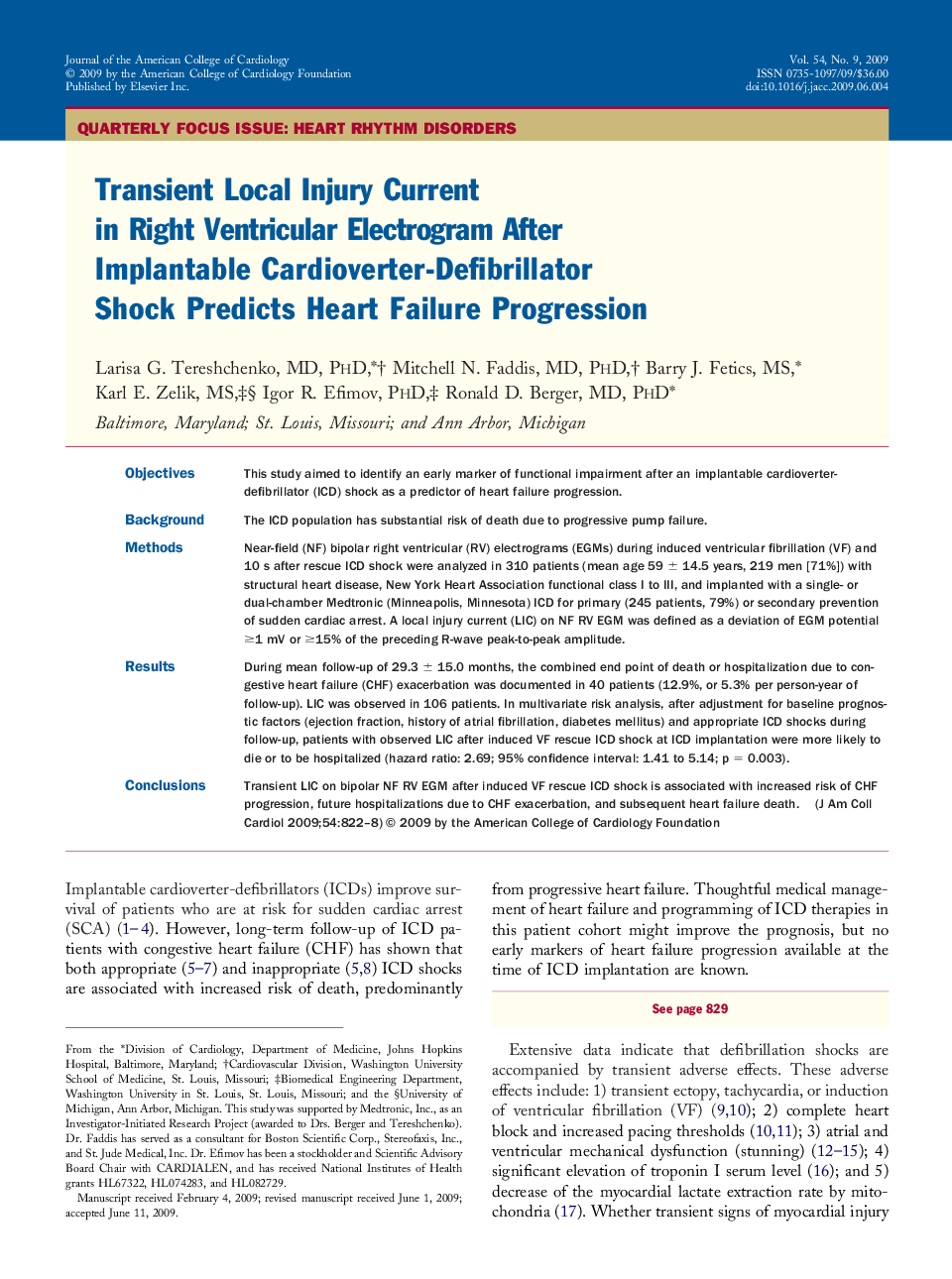| Article ID | Journal | Published Year | Pages | File Type |
|---|---|---|---|---|
| 2952236 | Journal of the American College of Cardiology | 2009 | 7 Pages |
ObjectivesThis study aimed to identify an early marker of functional impairment after an implantable cardioverter-defibrillator (ICD) shock as a predictor of heart failure progression.BackgroundThe ICD population has substantial risk of death due to progressive pump failure.MethodsNear-field (NF) bipolar right ventricular (RV) electrograms (EGMs) during induced ventricular fibrillation (VF) and 10 s after rescue ICD shock were analyzed in 310 patients (mean age 59 ± 14.5 years, 219 men [71%]) with structural heart disease, New York Heart Association functional class I to III, and implanted with a single- or dual-chamber Medtronic (Minneapolis, Minnesota) ICD for primary (245 patients, 79%) or secondary prevention of sudden cardiac arrest. A local injury current (LIC) on NF RV EGM was defined as a deviation of EGM potential ≥1 mV or ≥15% of the preceding R-wave peak-to-peak amplitude.ResultsDuring mean follow-up of 29.3 ± 15.0 months, the combined end point of death or hospitalization due to congestive heart failure (CHF) exacerbation was documented in 40 patients (12.9%, or 5.3% per person-year of follow-up). LIC was observed in 106 patients. In multivariate risk analysis, after adjustment for baseline prognostic factors (ejection fraction, history of atrial fibrillation, diabetes mellitus) and appropriate ICD shocks during follow-up, patients with observed LIC after induced VF rescue ICD shock at ICD implantation were more likely to die or to be hospitalized (hazard ratio: 2.69; 95% confidence interval: 1.41 to 5.14; p = 0.003).ConclusionsTransient LIC on bipolar NF RV EGM after induced VF rescue ICD shock is associated with increased risk of CHF progression, future hospitalizations due to CHF exacerbation, and subsequent heart failure death.
